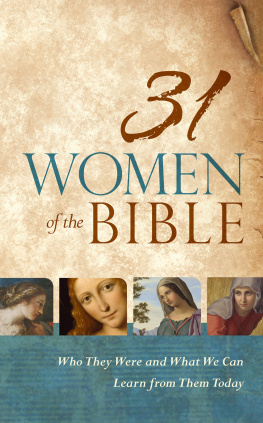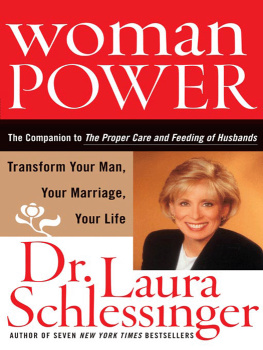All rights reserved. No part of this book may be reproduced in any form without written permission from InterVarsity Press.
InterVarsity Press is the book-publishing division of InterVarsity Christian Fellowship/USA, a movement of students and faculty active on campus at hundreds of universities, colleges, and schools of nursing in the United States of America, and a member movement of the International Fellowship of Evangelical Students. For information about local and regional activities, visit intervarsity.org.
Scripture quotations, unless otherwise noted, are the authors own translation.
The publisher cannot verify the accuracy or functionality of website URLs used in this book beyond the date of publication.
PREFACE
Why John 4, Yet Again? Why Now?
THE LEAD PASTOR OF A MEGACHURCH. A youth conference chaperone. A Sunday school teacher, the president of an evangelical Christian university, a Catholic priest, a youth pastor. Beginning in the fall of 2017, the #MeToo movement and its offshoot, #ChurchToo, have given women and men who have been abused by sexual predators and opportunists in Christian communities a platform to share their stories. The crisis is not new. But the tidal wave of revelations and accusations has made the crisis impossible to ignore as easily as in the past.
As easily: pastors, governing boards, and ordinary Christians have not always (perhaps even rarely) responded well to accusations, choosing to prioritize and protect the reputation of the abusers and the church. Christian communities have silenced victims and survivors by redefining abuse and assault as mutual sin or inappropriate relationships, a move that makes the person who was abused responsible for their own abuseand then shames them for it. Sexual crimes have therefore gone unreported to law enforcement, and sexual criminals have been free to abuse others.
This situation is changing as a tidal wave of credible allegations has swept away willful ignorance. Key church leaders and even entire denominations have publicly recognized their errors. Christian churches and parachurch organizations are developing stronger policies and procedures for protecting vulnerable people from abuse.
But I confess that, as I have listened to survivors tell their stories of abuse and of mismanaged responses that have only added to the trauma, I have been deeply angry. How has the church created a space in which abusers are enabled and the people they abuse are silenced and shamed? Why has the church been so slow to acknowledge the evil we have done, repent, and change? I have wondered where my place is in this crisis. What can a biblical scholar contribute to the churchs response to the crisis of sexual abuse?
There are two obvious possibilities. First, the Bible bears witness to people victimized by the powerful who ignore Gods demand for justice: Hagar; Dinah; Tamar in 2 Samuel 13; women harassed at wells and assaulted in fields; slandered brides; women like Sarah, Rebekah, and Bathsheba, endangered because they were seen by men. Biblical narratives of sexual assault are written from and reflect the perspectives of men in patriarchal societies. But their presence in the churchs Scriptures nonetheless demands that we hear and learn.
Second, a call for justice and the protection of the vulnerable runs straight through the Bible, from beginning to end. The commands of the Torah, the laments of the Psalms, prophetic indictments, Jesus words and actions, the exhortations of Paul and James, and more challenge the powerful to give up their power for the sake of the powerless. Both of these are important elements of a Christian response to the crisis of sexual abuse, and many survivors, counselors, pastors, and theologians have taken up the task of reminding the church of these biblical messages.
This book addresses a third concern. The Bible itself is implicated in the problem. The Bible gives limited attention to women or womens perspectives in stories and laws, which all reflect patriarchal cultural norms. Biblical stories and laws also disrupt a male-centric world with strong women who speak, lead, seek God, and are valued for their words. But through the history of the church, readers with their own patriarchal assumptions have often missed these disruptions.
The Bible challenges us with a vision for Gods love for the world, a love centered in justice and equity, in the thriving of those who have been oppressed. Its stories, commands, and prayers also show us the reality of life in a world ruled by sin and death. Unfortunately, tragically, the church throughout history has too often used the Bible to perpetuate abuse rather than protect the vulnerable. This book explores this space through one specific story: the woman at the well in John 4:4-42.
I have two purposes in this book. First, I survey the traditional Christian interpretation of the Samaritan woman as sexual sinner. This analysis particularly focuses on the intersection of women, sex, and sin in Christian understanding and the consequences of this intersection for women in the church. Second, I explore an alternate interpretation that centers the Samaritan womans words, influence, and leadership in the story. This interpretation challenges the objectification of women with womens agency in and contribution to the church.
The structure of the book echoes these two purposes, with the first part (chapters two, three, and four) centering on historical interpretations of the Samaritan womans story, and part two (chapters five, six, and seven) offering a reinterpretation of John 4:4-42. Chapter one explores the purposes of the book more fully, and brief introductions at the beginning of part one and part two explain what to expect in each section. Sidebars throughout the book provide supplemental information or draw attention to important questions and concerns. I also quote extensively from interpretations of John 4:4-42, and from sources that represent womens lives in the first century world. Many of these sources are accessible online, so you can explore for yourselves (links are provided in the bibliography).
Finally, in this book I will sometimes address historical and contemporary stories of assault. These stories may be difficult for readers who have experienced abuse, so please read with care. These stories may also be difficult for readers who have not experienced abuse. They should be. Listening to victims and survivors is not comfortable. But it is a necessary part of lamenting, repenting, healing, and changing our communal practices to prevent abuse and to support victims and survivors.
Victim and survivor refer to the same person. As Anne Marie Miller explains, the language of victim emphasizes the traumatic experience of assault, while the term















